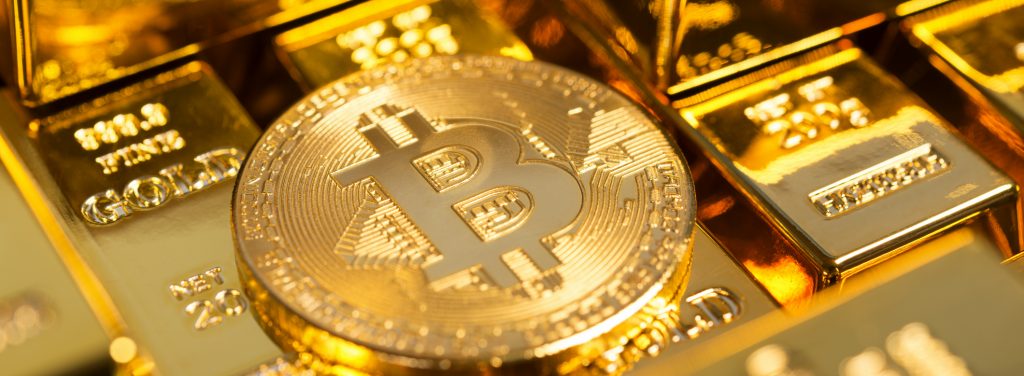Will Cryptocurrencies Replace Gold?
Will Cryptocurrencies Replace Gold?
By Sunshine Profits (Arkadiusz Sieron) Mar 12, 2019 01:44PM ET

Image Copyright© by American Bullion
The World Gold Council has issued quite a few interesting papers recently. In this edition of the Gold News Monitor, we discuss the most provocative ones. Such as the money worthiness of gold compared to Bitcoin. Or the ongoing gold repatriation trend as Romania recently joined the fray. What can the precious-metals investors learn from here?
Cryptocurrencies Are No Substitute For Gold
In January, the World Gold Council (WGC) published an investment update about cryptocurrencies. The main aim of the report is to refute the claim that cryptocurrencies could replace gold. The authors do not agree, pointing out that gold differs substantially from cryptocurrencies. In particular, the yellow metal:
- is less volatile – the dollar-denominated gold price is about 10 times less volatile than Bitcoin price;
- has a more liquid market – Bitcoin turnover is $2 billion a day on average, which is roughly less than 1 percent of the total gold market that has turnover of around approximately $250 billion a day;
- trades in an established regulatory framework;
- has a well understood role in an investment portfolio;
- has little overlap with cryptocurrencies on many sources of demand and supply;
- has broad appeal outside the tech-savvy demographics.
All these differences explain why Bitcoin and cryptocurrencies are not a substitute for gold. In particular, the former should not be considered a safe haven. The best example is Q4 2018, when global stock markets experienced their worst quarter since 2009 – cryptocurrencies then performed as risky assets and fell, while gold rallied. Although you can also find periods when gold did not behave like a safe-haven asset, we generally agree that cryptocurrencies are not a substitute for precious metals. Bitcoin was designed to mimic gold, but it still has to prove its moneyness, while gold has a proven few-thousand year history as a monetary asset.
Gold Demand Trends In 2018
On the last day of January, the WGC published its summary of the gold market for 2018. From the market's perspective, the developments of last year belong to the days of yore, so we will not analyze the whole market. However, we would like to point your attention to one important trend: central banks added 651.5 tons to their gold reserves in 2018, the second highest yearly total on record. And net purchases jumped to their highest level since the end of gold standard in 1971, as more central banks turned to gold as a portfolio diversifier.
Importantly, the rise in official purchases was accompanied by the increasing repatriation of gold. Many analysts interpreted this as a signal of intensifying nationalism, but there is also another narrative. The repatriation of gold signals that the central banks stopped lending gold for any significant volumes. You see, when you want to lend out your gold, you keep it in the Bank of England, the Fed or other systematically important, third-party locations, not in your own vaults. It means that – despite much speculation – the central banks intervene less in the precious metals market. That’s good news for all investors who desire greater transparency and a fairer price discovery process.
WGC’s 2018 Annual Review
In February, the WGC published a review of its activity in 2018. Although most of the review is of little interest to gold investors, the WGC also included its outlook for 2019. In short, the organization believes that increased market uncertainty and protectionist economic policies should make gold increasingly attractive as a hedge. Moreover, the slowdown in the US economy could curtail rising interest rates and limit dollar strength, which would support gold prices.
And in 2019, we should see increasing concerns about a global growth slowdown or even outright recession fears with resulting elevated stock-market volatility and political and economic instability in Europe. We recently discussed the ECB's major policy reversal following the EZ's slashed economic growth forecast and its implications for the gold market.
Disclaimer: Please note that the aim of the above analysis is to discuss the likely long-term impact of the featured phenomenon on the price of gold and this analysis does not indicate (nor does it aim to do so) whether gold is likely to move higher or lower in the short- or medium term. In order to determine the latter, many additional factors need to be considered (i.e. sentiment, chart patterns, cycles, indicators, ratios, self-similar patterns and more) and we are taking them into account (and discussing the short- and medium-term outlook) in our trading alerts.
Thank you.
Complete article posted on Investing.com
Interested in making extra money? Learn More!.
Article posted on Markethive by Jeffrey Sloe.
Visit MarketHive to learn more: http://markethive.com/jeffreysloe
